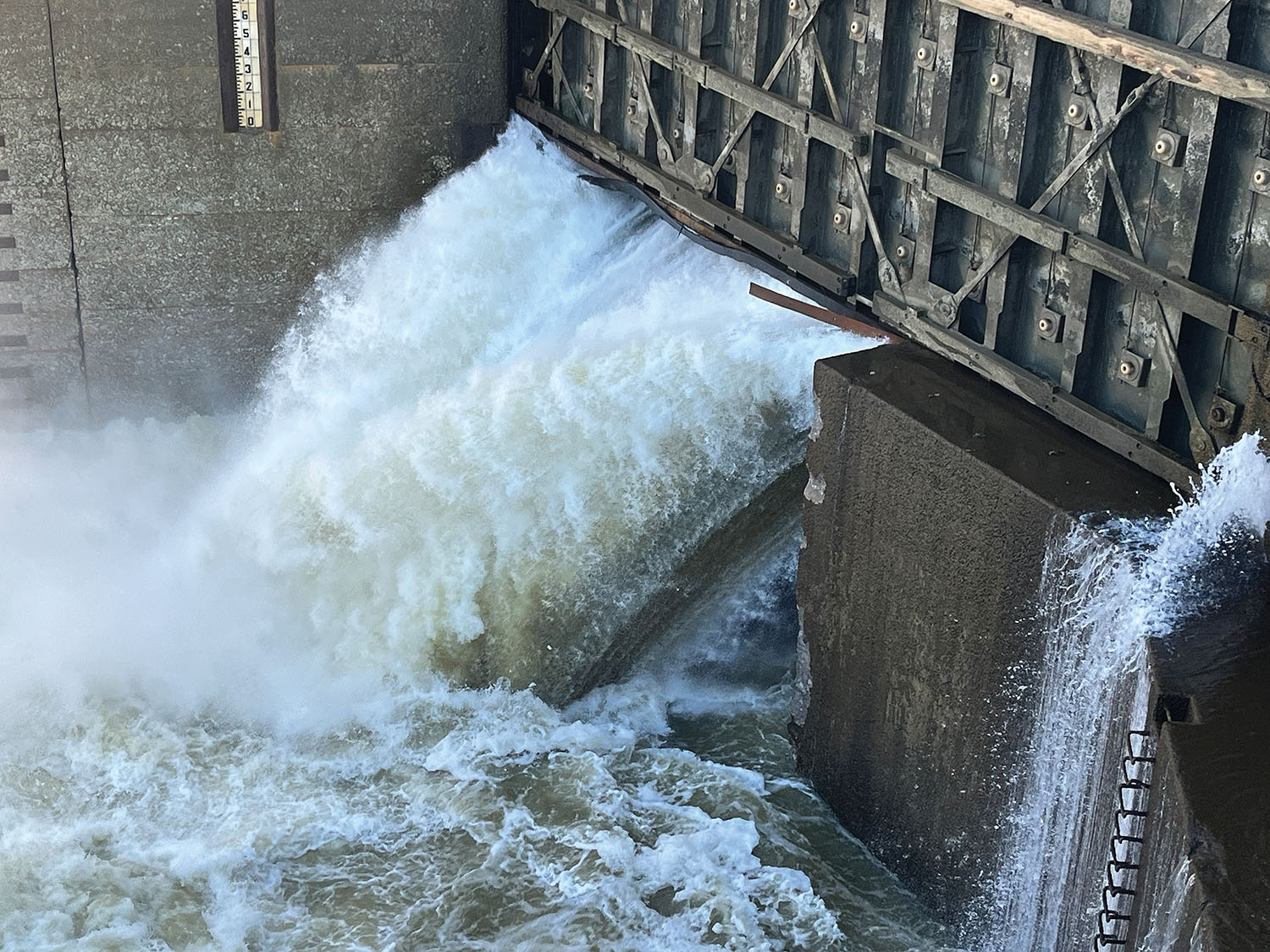Nearly two weeks after a portion of the upper miter sill at Demopolis Lock failed, forcing the Mobile Engineer District to close the lock to navigation, Corps officials continue to move assets to the area and assess the extent of the damage, despite challenges from recurring heavy rains in the area.
The failure occurred on January 16 around 6 a.m., when the lock operator on duty heard a “boom.” Upon inspecting the chamber, the lock operator observed water rushing under one of the upper miter gate leafs, with half of the miter sill missing.
With a higher than normal flow in the lock chamber, Corps officials partnered with Tuscaloosa, Ala.-based Parker Towing Company (PTC) to develop a plan for safely closing the lower miter gates. Corps officials, with the help of several PTC towboats, successfully closed the lower miter gates shortly before noon on January 19. Doing so allowed the Corps to equalize the water level in the lock chamber and stop the uncontrolled flow of water under the upper miter gates.
Later that night, the Tennessee Valley Authority’s towboat, the mv. Freedom, reached the upper end of Demopolis Lock, after traveling down the Tennessee River and the Tennessee-Tombigbee Waterway from Florence, Ala. The following day, crane operators from the mv. Freedom set the stop logs on the upper end of the lock, which allowed the Corps to lower the water level in the chamber and begin assessing damage. The Corps and a team from R&D Maintenance successfully tested the upper miter gates on January 22 and found no damage to the pintles or function of the gate leafs.
Next steps at the lock include the arrival of the mv. Tenn-Tom and the mv. Lawson, the two floating plants that typically do maintenance work along the Tenn-Tom Waterway and the Black Warrior-Tombigbee Waterway. Both vessels were near Mobile, Ala., when the failure occurred at Demopolis, with the Lawson on drydock. Once those vessels are on site, the Corps will be able to set the lower stop logs and completely dewater the lock chamber.
Only then will the Corps be able to complete the assessment phase of the repair and begin executing a repair plan.
Anthony Perkins, project manager for the Black Warrior-Tombigbee Waterway, said the Lawson and Tenn-Tom should be on site around February 2.
“That’s the rough ETA we have so far,” Perkins said. “They should be on site by the end of next week.”
But in the near term, weather has been a challenge, with heavy rains raising the pools on both the upper and lower ends of the lock above the cutoff for dewatering operations. At Demopolis, the lock cannot be dewatered if the lower pool exceeds a 40-foot elevation due to uplift concerns.
“Normally, we dewater in the summer and fall at these locks, because if you have high water, there’s always the potential that you go over the stop logs and it floods you out, which delays your work,” Perkins said. “Here, in January and the first of February, you’re in the worst time of the year that you’d want to dewater because you’re going to have high water and rainfall. And that just happened to us yesterday.”
The long-term forecast from the National Weather Service is favorable, but confidence is lower than near-term forecasts.
“Hopefully by the end of next week, we’re back on the down curve,” Perkins said.
Until the lock is fully dewatered and the Corps officials can complete their assessment, they won’t know the extent of the damage to the sill or the timeline for repairing the lock. Thus far, Corps officials have stuck to a 30- to 60-day rough estimate.
Caption for photo: Water rushes under the upper miter gate of Demopolis Lock following a breach of the gate sill January 16. (U.S. Army photo by Ryan Reich)




